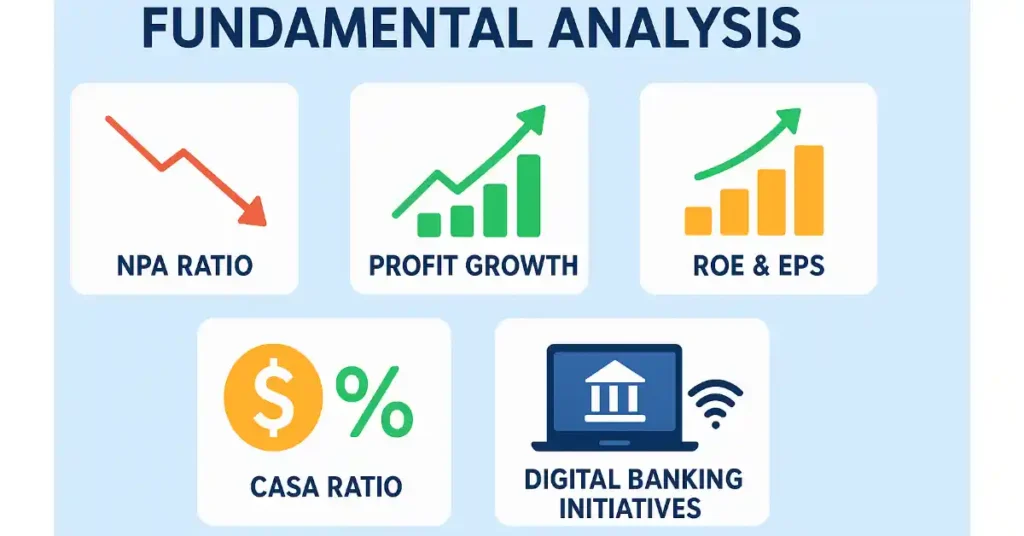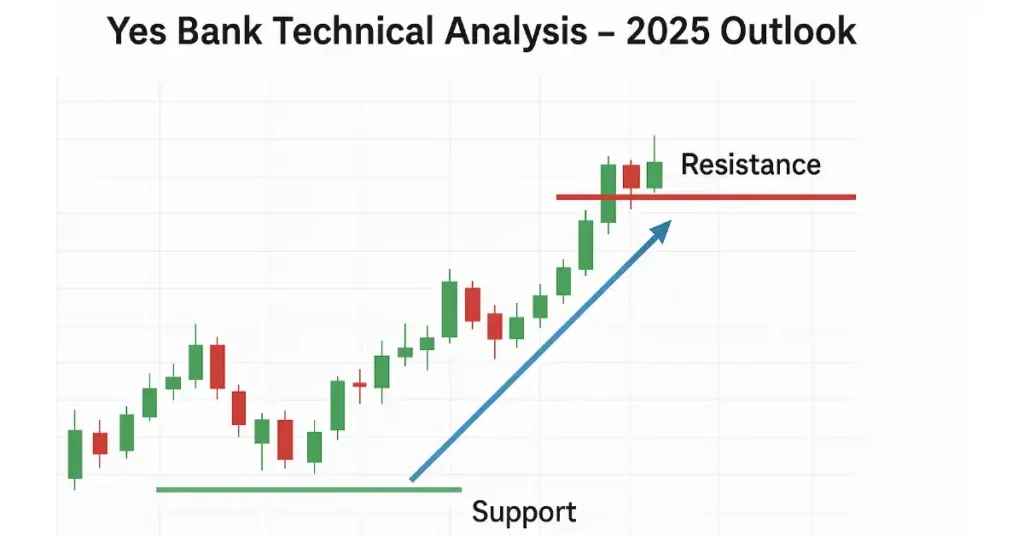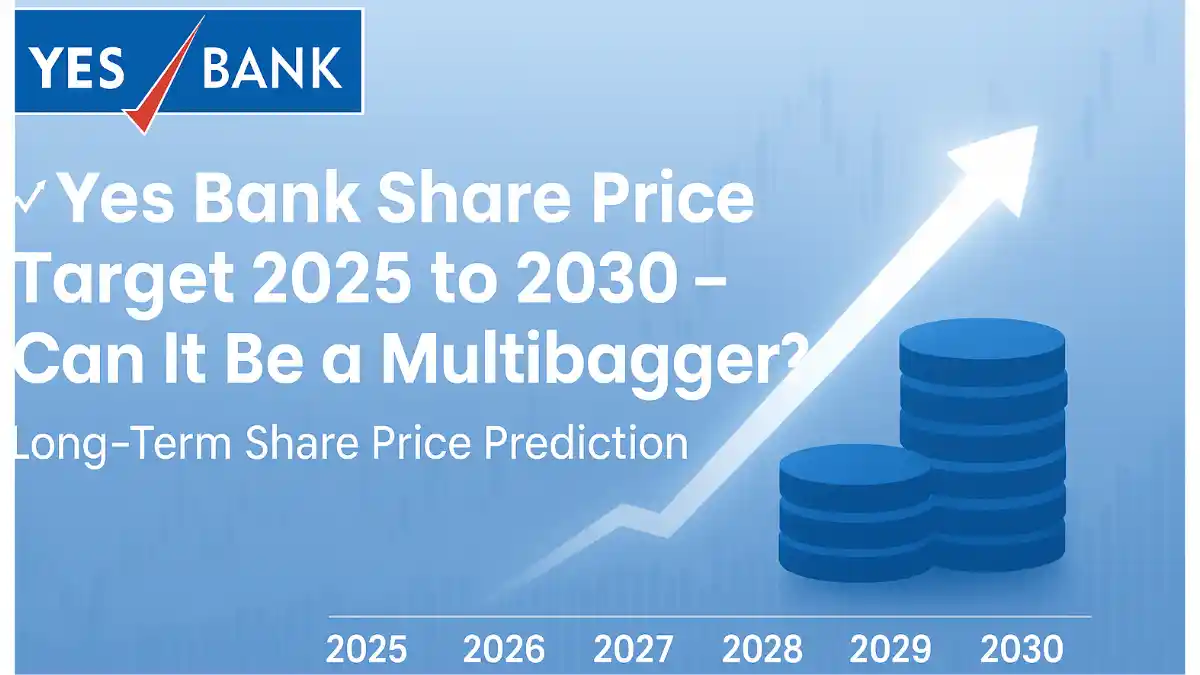Discover Yes Bank share price targets from 2025 to 2030 with expert analysis, growth forecast, technical insights, and long-term investment outlook.
Introduction – Yes Bank’s Comeback Story
The Indian banking sector is witnessing massive growth, and Yes Bank stands at a crucial turning point in its journey. Investors and traders are eagerly watching the Yes Bank share price to understand whether this private lender can regain its former glory.
After facing a financial crisis a few years ago, the bank has restructured itself under the guidance of SBI (State Bank of India) and with new investors like Sumitomo Mitsui Banking Corporation. Now, every investor is asking:
What is the Yes Bank share price target for 2025, 2026, 2027, 2028, 2029, and 2030?
In this detailed guide, we will cover Yes Bank share price predictions, fundamental and technical analysis, and a year-wise Yes Bank stock forecast till 2030.
Yes Bank Company Overview
Founded in 2003, Yes Bank Ltd. has become a well-known name in India’s private banking sector. The bank provides retail, corporate, MSME, and digital banking services. With the government’s focus on digital payments and UPI adoption, Yes Bank digital banking has grown exponentially.
Key facts (as of 2025):
- Current Yes Bank share price (NSE): ₹22.70
- Market Capitalization: ₹71,000+ Crore
- Book Value: ₹15.6 per share
- P/E Ratio: ~25×
- ROE: 5.46%
- Promoter Stake: SBI & LIC ~45%
- Foreign Investor: Sumitomo Mitsui Bank (SMBC) recently increased stake
- 52-Week Range: ₹15.50 – ₹25.20
(Source: NSE, Moneycontrol, Screener.in)
Yes Bank Share Price Analysis (Fundamental View)

1. Profitability & ROE
Yes Bank’s profitability has gradually improved over the last three years. Although the return on equity (ROE) is still low, its rising trajectory shows progress toward sustainable profitability.
2. Asset Quality
Gross NPAs have reduced significantly, and the NPA ratio is now among the lowest since 2019. The bank’s recovery model is focused on reducing bad loans and improving cash flow.
3. Digital Growth
Yes Bank’s digital banking strategy is paying off. The bank now handles over 45% of its transactions digitally, leveraging UPI, net banking, and fintech tie-ups.
4. Capital Strength
After receiving capital from SBI and global partners, the bank’s capital adequacy ratio has stabilized, enabling room for loan expansion and new product development.
Yes Bank Share Price Target 2025 to 2030 (Year-wise Prediction)
Here’s a detailed Yes Bank share price forecast based on current fundamentals, analyst reports, and technical analysis.
| Year | Conservative | Base Case | Bullish | Sentiment |
|---|---|---|---|---|
| 2025 | ₹18 – ₹20 | ₹20 – ₹23 | ₹25 – ₹27 | Neutral to Positive |
| 2026 | ₹19 – ₹21 | ₹23 – ₹26 | ₹28 – ₹30 | Mild Bullish |
| 2027 | ₹21 – ₹24 | ₹25 – ₹29 | ₹32 – ₹35 | Bullish |
| 2028 | ₹23 – ₹26 | ₹27 – ₹32 | ₹36 – ₹40 | Positive |
| 2029 | ₹25 – ₹28 | ₹30 – ₹34 | ₹40 – ₹45 | Strong Bullish |
| 2030 | ₹27 – ₹30 | ₹33 – ₹37 | ₹45 – ₹50+ | Long-Term Bullish |
Yes Bank Share Price Target 2025
In 2025, the Yes Bank share price target is projected between ₹20 and ₹25, depending on quarterly results and sector performance. If the bank maintains profit growth and NPA control, traders could see short-term momentum up to ₹27.
Yes Bank Share Price Target 2026
The Yes Bank share price target 2026 may range between ₹23 – ₹30.
With steady digital growth, credit expansion, and higher retail participation, Yes Bank could outperform the broader banking index.
Yes Bank Share Price Target 2027
By 2027, analysts expect improved ROE (Return on Equity) and strong retail loan growth. In this scenario, the Yes Bank share price could reach ₹32–₹35.
Yes Bank share future prediction 2027 also factors in India’s GDP growth (expected 7%+), which supports credit demand across private banks.
Yes Bank Share Price Target 2028
If Yes Bank sustains its digital momentum and fee income growth, the Yes Bank share price target 2028 could be between ₹36 and ₹40.
This would mark a full recovery phase, with Yes Bank emerging as a strong digital-first private bank.
Yes Bank Share Price Target 2029
The Yes Bank share price forecast 2029 suggests potential levels around ₹40–₹45 if profits grow by 12–15% annually.
By this stage, the bank could enjoy higher market confidence, and foreign institutional investors may increase their stake.
Yes Bank Share Price Target 2030
By 2030, the Yes Bank share price target could range between ₹45 and ₹50+ in the bullish scenario.
WalletInvestor forecasts Yes Bank to reach approximately ₹31.46 by 2030, while some market experts expect even higher valuations if growth compounds.
Technical Analysis: Support & Resistance Levels

- Support: ₹19.50
- Resistance: ₹25.80
- Breakout Zone: ₹26–₹27
- Indicators: RSI at 60 (neutral-bullish), MACD positive crossover
- Short-Term Target: ₹25 – ₹27
- Long-Term Target: ₹45 – ₹50
Technical traders see Yes Bank as a breakout candidate if it sustains above the ₹26 resistance level.
Expert Analyst Opinions
| Source | Target Price | Outlook |
|---|---|---|
| Investing.com | ₹17 – ₹20 | Neutral |
| INDmoney | ₹17.7 | Bearish |
| Trendlyne | ₹18.5 | Neutral |
| WalletInvestor | ₹31.4 (2030) | Bullish |
| Economic Times | ₹25 (short-term) | Positive |
| Groww | ₹22 (fair value) | Stable |
Fundamental Catalysts for Growth
- Foreign Investment: Sumitomo Mitsui’s stake increase shows global confidence.
- Digital Transformation: Yes Bank’s fintech collaborations enhance competitiveness.
- Improving NPAs: Continuous reduction strengthens investor trust.
- Corporate Loan Revival: Safer exposure to large borrowers supports income.
- Economic Tailwinds: India’s banking sector growth remains robust.
Risks and Challenges
- High valuation vs earnings
- Execution risk if management underperforms
- Competition from HDFC, ICICI, and Axis Bank
- Market sentiment volatility
- Global economic slowdown
FAQs
1. What is the Yes Bank share price target 2025?
The 2025 target is ₹20–₹25 depending on market momentum and fundamentals.
2. What is the Yes Bank share price target 2030?
By 2030, Yes Bank could reach ₹45–₹50+ in a bullish scenario.
3. Is Yes Bank a good long-term investment?
Yes Bank’s fundamentals are improving, making it suitable for long-term moderate-risk investors.
4. What are the latest updates on Yes Bank?
Recent stake increase by Sumitomo Mitsui and stable profit growth have boosted market confidence.
5. Can Yes Bank become a multibagger by 2030?
If profitability sustains and ROE improves, Yes Bank could deliver 2× returns in 5 years.
6. What is Yes Bank’s technical outlook?
Support near ₹19, breakout above ₹26 could lead to ₹30+ target.
7. Does Yes Bank pay dividends?
Not currently, but dividends may resume after consistent profit growth.
8. Which is the best price to buy Yes Bank share?
Accumulating near ₹20–₹21 levels could be ideal for long-term investors.
9. What is Yes Bank’s future prediction?
The next 5 years look stable to bullish with digital growth leading the charge.
10. What are the top banking stocks like Yes Bank?
Other popular banking shares include HDFC Bank, ICICI Bank, Axis Bank, and IndusInd Bank.
Conclusion – Future of Yes Bank Share
Yes Bank’s story is one of resilience and transformation. While the Yes Bank share price forecast for 2025–2030 shows a gradual upward trajectory, success depends on consistent performance and management efficiency.
Base case: ₹33–₹37 by 2030
Bullish case: ₹45–₹50+
Bearish case: ₹25–₹28
If the bank sustains ROE above 10%, keeps NPAs below 2%, and continues digital expansion, it could be among the top-performing banking stocks in India by 2030.
Disclaimer
This article is for educational and informational purposes only. The Yes Bank share price targets, predictions, and analysis mentioned here are based on publicly available data, technical indicators, and market research as of October 2025. These should not be considered financial or investment advice.
Stock markets are subject to risks and volatility. Investors are advised to conduct their own research or consult with a certified financial advisor before making any investment decisions. The author and publisher are not responsible for any financial losses or gains arising from the use of this information.

